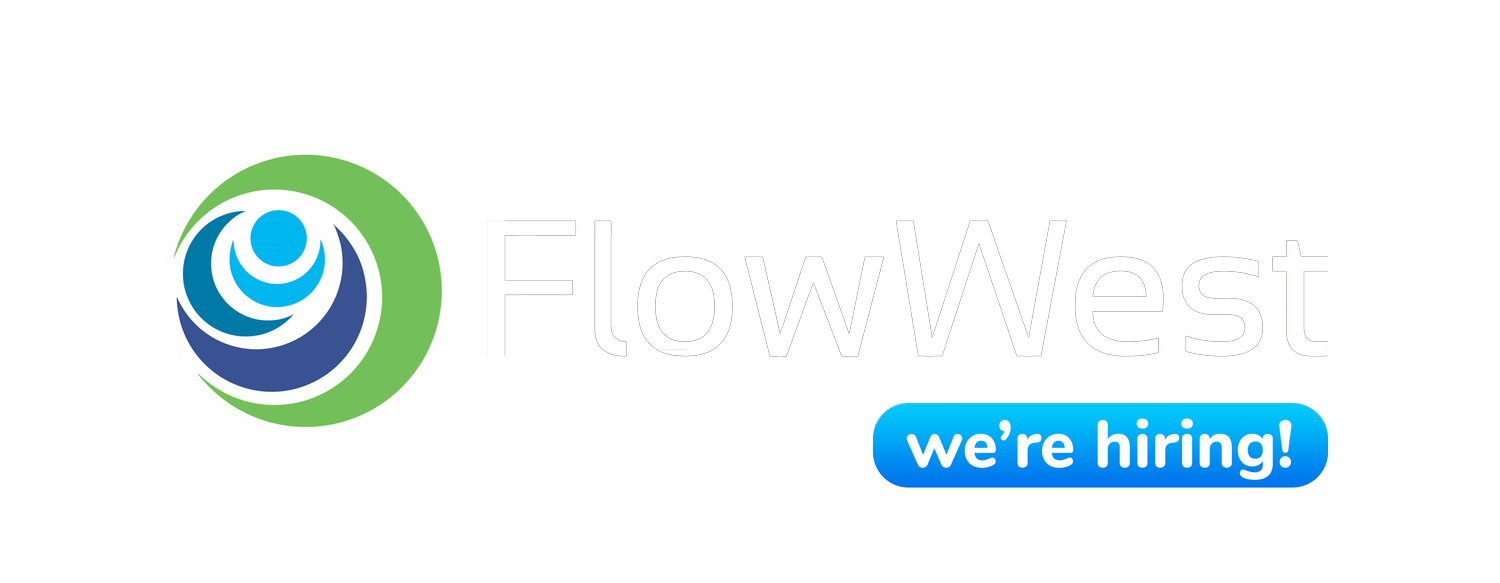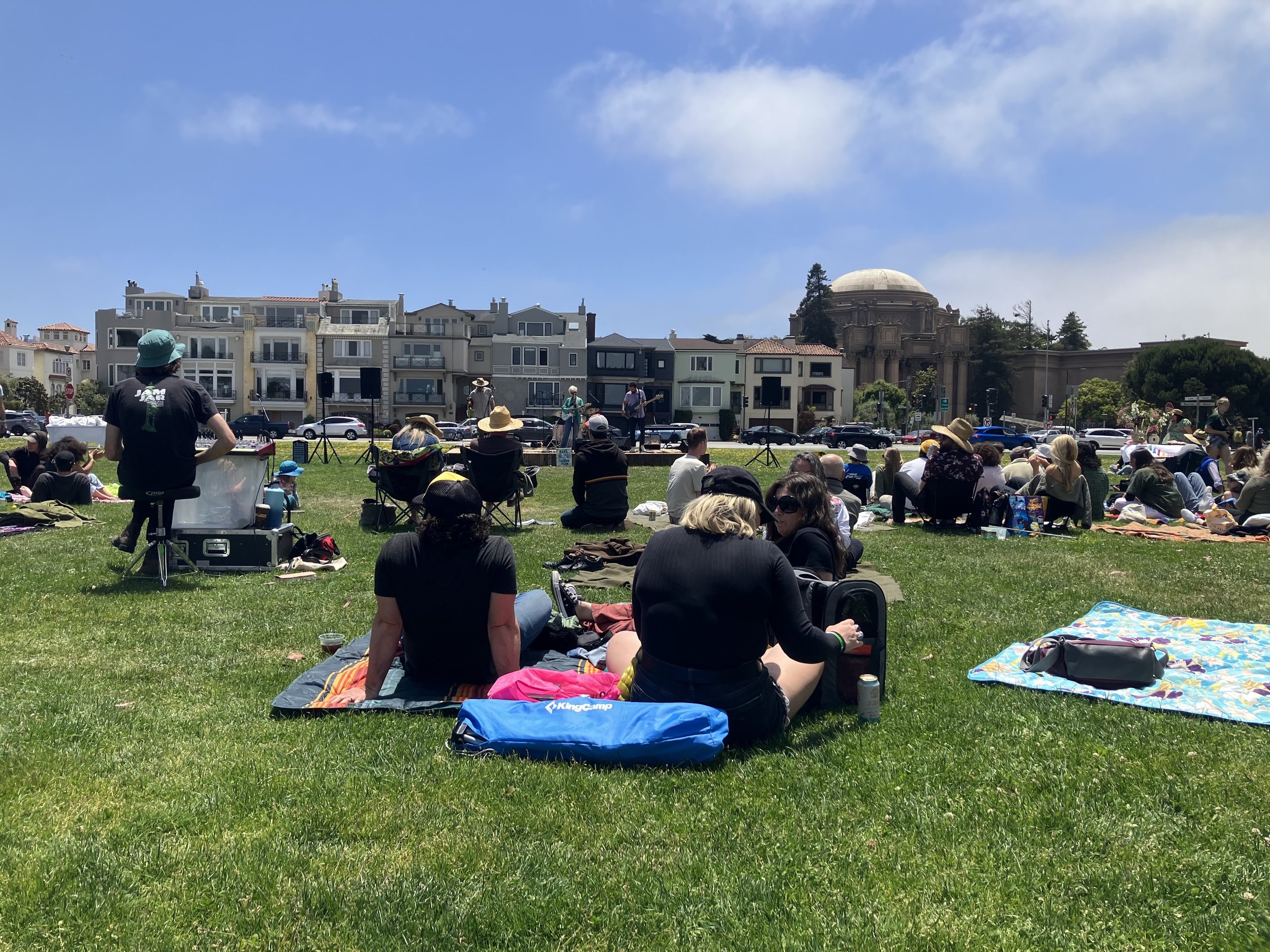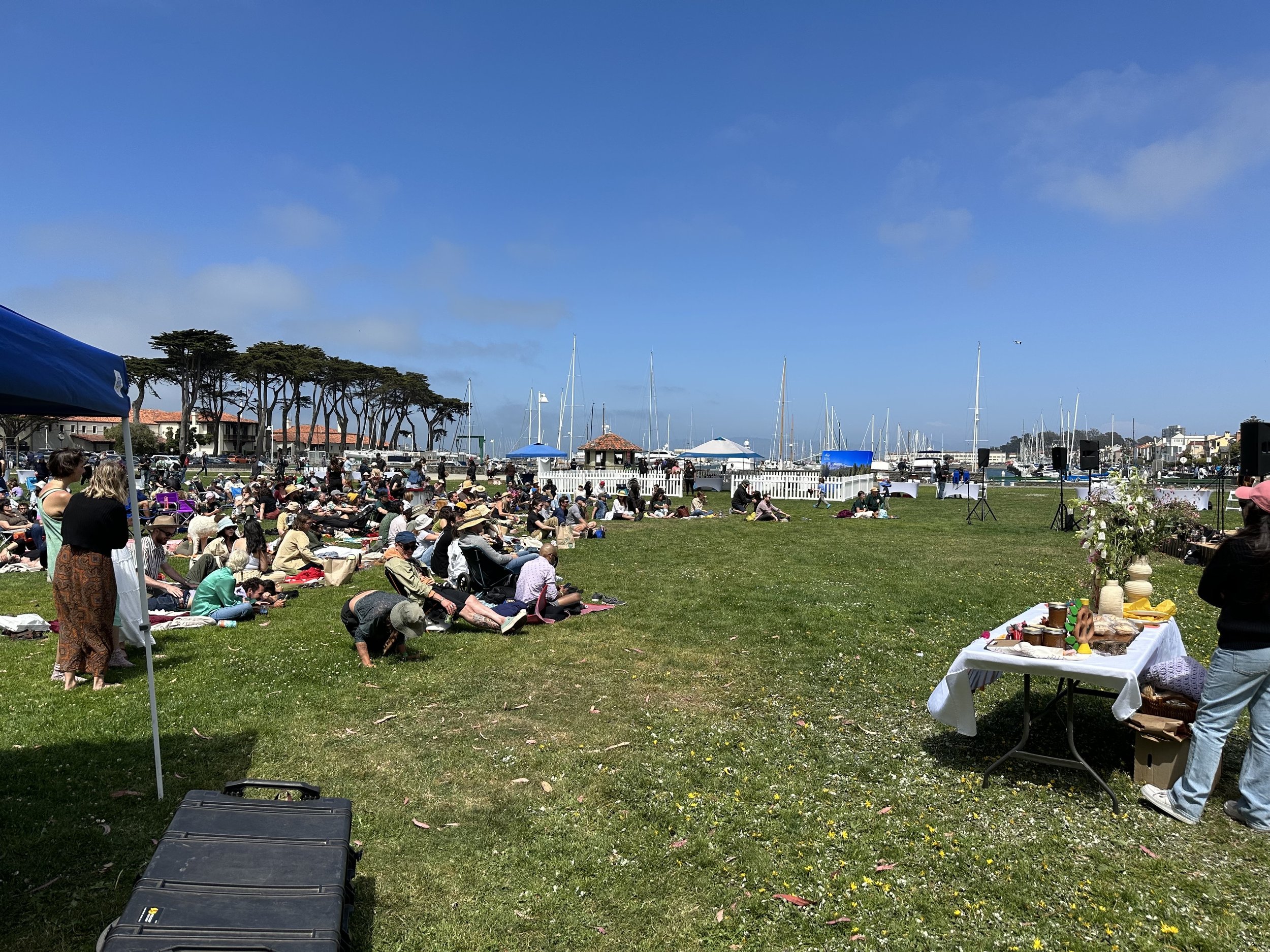FlowWest is thrilled to be participating in the biennial California Adaptation Forum. FlowWest has been working at the forefront of climate vulnerability assessment, adaptation planning, and climate resilience strategy development for nearly a decade. The Forum will be held this year in Pomona, CA from 7/31-8/2, and promises to be an inclusive gathering that will bring together folks approaching this complex work from different perspectives in order to expand climate resilience across the State. In our climate adaptation work, we have grown to appreciate the deep importance of creating spaces for diverse voices to be heard and how empathic practice is necessary for building pathways to climate resilience. Read more below.
Now Hiring: Water Resources Engineer
FlowWest is still hiring for a water resources engineer. Are you passionate about fish passage design? Apply now to be involved with some of California's most cutting-edge water resource management solutions and a team making a difference in local watersheds.
Embracing Nature's Essence: Tuolumne River Trust's River Day and FlowWest's Commitment
Rivers are the lifelines of our planet, nurturing both human and natural ecosystems. One such remarkable river, the Tuolumne River, has captured the hearts of many with its mesmerizing beauty and vital role in sustaining life in Northern California. The Tuolumne River Trust, in collaboration with several sponsors including FlowWest, organized a grand event known as River Day to celebrate the river's splendor and raise awareness about its conservation. This year's River Day, held on June 4th 2023 at San Francisco's Little Marina Green, marked the 50th anniversary of World Environment Day and highlighted the importance of supporting local watersheds.
Enjoying the River View
FlowWest employee Ashley Vizek enjoys the photo backdrop of the Tuolumne River in San Francisco’s Little Marina Green; a gorgeous landscape worth protecting!
This past sunny Sunday, music blended with the sounds of nature as San Francisco's Little Marina Green transformed into a vibrant gathering place for River Day. From noon until 4 PM, attendees were treated to a captivating lineup of talented musicians who serenaded the crowd, infusing the atmosphere with melodies that echoed the spirit of the Tuolumne River. The performances by Marty O'Reilly, Kelly McFarling, Baby Steps, Kacie Hill, and Maya Elise and The Good Dream created a harmonious backdrop for a day filled with celebration and environmental consciousness.
Tuolumne River Trust's River Day celebrated the inherent beauty and ecological importance of the Tuolumne River. The event served as a harmonious convergence of music, environmental awareness, and community engagement. Through such collaborative endeavors, we can inspire others to cherish and safeguard our rivers, ensuring a vibrant and sustainable future for generations to come.
FlowWest at NM Water Data Workshop
Mark Tompkins: Guest Speaker at Oregon State's Monday Morning Meetings
Recently, at the Monday Morning Meetings seminar series hosted by the Department of Fish and Wildlife at Oregon State University, Mark Tompkins, co-founder of FlowWest, gave a talk on the evolution of quantifying habitat over time and proposed a modernized approach to quantifying habitat using remote sensing data. Remote sensing data allows for regular updates to habitat data, making it easier to track changes to the landscape and adjust restoration strategies accordingly.
Ten Earth Day Activities that are Family-Friendly
As Earth Day approaches, it's important to remember the importance of protecting our planet's precious resources, particularly in areas facing unique challenges. California, for example, is home to a vast array of aquatic ecosystems, but it also faces challenges such as drought and water pollution. With this in mind, here's a list of 10 Earth Day activities that families can do to help protect California's water resources. From reducing water usage to supporting local conservation efforts, these activities are a great way to celebrate Earth Day while also making a positive impact on the environment.
ARTICLE: Parched California Misses a Chance to Store More Rain Underground
"In the Sonoma County wine region, north of San Francisco, a group of vineyards and local agencies is working with the Dry Creek Rancheria Band of Pomo Indians on a multimillion-dollar system of pumps and pipes that would grab large gulps of the Russian River during storms and distribute it to growers’ fields. The challenge, said Philip Bachand, an engineer on the project, will be persuading California water officials, who he said are overly concerned that allowing people to reroute floodwater will deprive others downstream."
Quantifying Every Grain of Rice to Save Salmon
Have you ever looked at a field of rice and thought “this can feed endangered fish”? Jacob Montgomery, Central Valley Project Manager at CalTrout, has for some time now. Jacob and his team at CalTrout have compiled an impressive dataset of the benefits of rice field and floodplain food production to baby salmon. FlowWest has been working on a variety of projects that are beginning to utilize this new data to support better decision-making for salmon restoration. Several members of the FlowWest team recently joined Jacob to see a variety of sites where food production for baby salmon is already happening or could happen in the future.
Go With the Flow - Hunter Herrera
Hunter Herrera is one of FlowWest’s software developers, based in Santa Monica. Having grown up in Vermont, Hunter has seen the duality of American landscapes and now cherishes his time back on the west coast. You can find Hunter on the Pier with friends, or at a trendy new food pop-up in town. One of his passions is taking advantage of Southern California weather by visiting natural landscapes in his area, bicycling, and hiking. Read more about some current projects and career path below.
Kelsey Creek Fish Passage Improvement Project Featured in Lake County News
Ironically, the Kelsey Creek Fish Passage Structure acts as a barrier to native fish, including the Clear Lake Hitch. The Clear Lake hitch, or Chi, as named by the Xa-Ben-Na-Po Band of Pomo Indians and other local indigenous tribes, are a culturally and biologically important species found only in Clear Lake and its tributaries. In addition to the physical barrier, the water velocity in Kelsey Creek is unnaturally high due historic gravel mining and the channelization of the creek. Barriers to spawning habitat contribute to the perilous conditions for the Chi, who are at the brink of extinction.
FlowWest Project is One of First in State to Receive Innovative CEQA Exemption for Habitat Restoration
The Statutory Exemption for Restoration Projects will speed up project timelines and cut down on paperwork to implement much-needed restoration across California.
OAKLAND, CA, December 28, 2022. The Basso/La Grange Reach Floodplain and Spawning Habitat Restoration Project is one of the first in California, and the first in Stanislaus County, to qualify as statutorily exempt under the California Environmental Quality Act (CEQA) Statutory Exemption for Restoration Projects (SERP). The SERP is just one of the many innovative tools developed by California Department of Fish and Wildlife (CDFW) as part of its “Cutting the Green Tape” Initiative. The statutory exemption is solely for projects that "conserve, restore, protect, or enhance, and assist in the recovery of California fish and wildlife, and habitat upon which they depend or that restore or provide habitat for California native fish and wildlife". The project is one of only 12 projects that have been determined to be exempt under the SERP, and underwent a rigorous review process. FlowWest crafted the exemption documents and worked closely with CDFW to ensure the submittal materials included everything the CDFW Director needed to find the project statutorily exempt. FlowWest is providing the full suite of planning and floodplain design services for the project.
Happy Holidays from FlowWest!
Happy holidays, solstice, and new year to everyone. We are grateful to our clients, employees, and partners for the hard work that gets put in every day. Here's to a great 2023 full of river restoration!
Go With the Flow: Ashley Vizek
For Ashley, the environment was always in her life. She spent her youth exploring forests and listening to singing insects in the Chicago suburbs. Today, she is part of the FlowWest Data Team that is developing an app to provide up to date monitoring data for Spring Run Chinook Salmon, a threatened species native to the Central Valley. As our Senior Data Analyst, Ashley manages a team of data scientists that put their hard work to the test every day building out programs in tandem with our development team. Based in Oakland, Ashley is an avid skier and spends her winters in Utah with her family doing all sorts of winter activities. Read more about her current projects and career path below.
Great Valley Grasslands State Park Groundbreaking Ceremony Celebrates Habitat Revitalization in Central Valley
Together with FlowWest, CA State Parks and an array of partners have advanced this important project that will create over 200 acres of new habitat for baby salmon from concept to construction. FlowWest has been the lead consultant on every phase of the project, from grant writing, to a feasibility study, to design and permitting, and construction monitoring.
2022 Sustainable Gift Guide
With the holidays in full swing, many of us are now focused on holiday celebrations. FlowWest partners with local and national non-profits to help aid their missions and would like to use our platform to amplify the work they do this holiday season. The list below can help kick-start your holiday giving in a way that promotes sustainability, helps local organizations, and can get you some cool gifts for your community. Whether it’s helping restore wild fish populations, or supporting marginalized communities in the environmental space, this gift guide aims to amplify the work these organizations do.
Go With the Flow: Jordan Hoang
Go With The Flow: a FlowWest company blog series. Our bimonthly posts feature sneak peeks of projects currently under way and a bit more about our hardworking employees. Jordan is the Senior Software Developer here at FlowWest, and was the first fully remote team member to be hired in early 2020. Based in Austin, TX, Jordan leads the team in keeping our software services secure, intuitive, and useful to scientists. Jordan graduated from the University of Texas at Austin with a BS in Geological Sciences. In 2017, Jordan went to a Hack Reactor coding bootcamp to jumpstart his development career. Working at FlowWest gives him the rare opportunity to have a job that combines both his passions.
Go With the Flow: Jake Kramarz
Welcome to Go With The Flow, a new FlowWest company blog series. Our bimonthly posts will feature sneak peeks of projects currently under way and a bit more about our hardworking employees.
Jake Kramarz is an Associate Hydrologist and has been with FlowWest since the beginning of 2022. As one of our newer employees, we wanted to sit down with him and pick his brain about a few exciting projects and his career trajectory.
Always on the move
Jake is passionate about hydrology, the Warriors, and hiking around the Bay Area.
How did you get into the environmental services sector?
I did a lot of outdoorsy activities as a kid; I hiked a lot, went to summer camp, and had environmentally-friendly parents. When I got to college I wanted to do something related to the environment. I landed on an Earth Sciences and Environmental Geology degree at UC Santa Cruz. I realized soon after graduating that it was impossibly hard to land the job I wanted without a Masters. So off to the Masters program I went. But I had to decide what to study – meteorology was too much chemistry, and I’d heard that whatever you do your masters thesis in is what you “are”. If you do your thesis on the structure of tornadoes, you will be “the tornado guy”.
I grew up in Marin county, where there was lots of flooding. All my grade schools flooded. Because of this, I chose Hydrology, got my Masters, and then looked around for work at water resources consulting companies. Nine months after my graduate degree I got hired in 2016, but only lasted eight months due to a lack of work. After a couple months, I found a new job at a very small company, just two other people. I stayed with this company for over four years, but yearned for bigger projects and more co-workers to learn from and hone my skills with, especially in AutoCAD Civil 3D.
My previous employer had put me through a couple AutoCAD and Civil 3D introductory courses, however, mimicking natural topography is hard to design the way civil engineers design roads. My current colleague, Cristen, teaches AutoCAD in a great way, with lots of rules and processes, and has helped me acquire new skills for design work. First, you go out and do a topographic survey to capture existing conditions, and then build digital elevation models (DEMs) in Civil 3D. These existing conditions DEMs get sent to Bethany in the modeling team, who runs hydrologic models to see what water flows do (or are expected to do) with different flow sizes. We use that info to build design DEMs, look at whatever we want to design for the project like bank/bed stabilization and creek restoration. It can also be used for helping with fish passage or restoring a degraded creek.
What are some of your favorite projects going on currently?
One of our founders, Anthony, had been put in contact with someone in Diablo, CA with a small creek stabilization / restoration project. Anthony asked if I wanted to be the project manager. This allows me to get to do a bit of everything - design, survey outside with Nick, client interface, and work with teammates like Ari who is the permitting environmental compliance specialist.
Jake’s recent project – building up the creek to prevent erosion and fixing the driveway.
Private projects move much faster than public projects; it's based on client budget. We don’t have to go through the ‘bureaucracy of themselves’, which is typical for public projects. It takes roughly 10 months to send to regulatory agencies and permitting review. This project also works with a structural engineer to build a driveway over the creek. Permitting agencies can take months – we plan to submit plans by late winter/early spring in order to build over the summer.
What’s a past project you want to share?
I was a part of the Feasibility Study for Open Space and Park Expansion in the Lower Sausal Creek Watershed. The aim of the study was to talk with community members to glean possible ideas for improving the lower Sausal Creek watershed. This time, I teamed up with Paul, Bethany, and Anna to write a 90 page report for the Friends of Sausal Creek. They have spearheaded several projects that have been completed in the upper watershed. Dimond Park had a large portion of the creek restored. The creek was brought up from underground, making it a beautiful creek corridor. This time, we wanted to focus on the lower watershed. Unfortunately it’s a less affluent area. We asked people what they wanted, and we were surprised to have people see it as something to fear.
Our study looked at a handful of parks–or potential parks–including Wood Park (in the upper part of the lower watershed), below Highway 580. How can we improve the park? It doesn’t seem to be well maintained, there is missing signage, there is no bathroom, entrances are overgrown and difficult to access. Our study highlighted improving entrances, making it more inviting, adding park infrastructure, and more friendly usable space. The creek goes into a big culvert under the park and doesn’t resurface into an open creek until downstream of the park. Currently, there are no trails that go to either of those places. When we investigated, the team had to walk down a concrete rainwater swale (it was definitely not a path) to get beyond a chain link fence to even see the creek.
The Friends of Sausal Creek, founded in 1998, is an organization devoted to the restoration, maintenance, and protection of Oakland, CA’s Sausal Creek watershed. This Feasibility Study was funded by a DWR grant. Now that they have a report, they can use the info to go to the community. Our work was to flesh out the ideas, identify cost estimates and constraints, and determine priorities in advancing the improvements. We hope to continue working with FOSC, but until then, it’s in their hands to realize the improvements we suggested.
What is something that everyday people can do to help their local watershed?
If your neighborhood has stormwater drains (usually says, “no dumping, drains to bay”), don’t wash your car on the curb. All that soap is polluting and the water goes directly into the bay and your local watershed. Car washes also recycle their water (required by law) so none of that pollution makes it into the local ecosystem.
Where do you see the future of FlowWest?
One of the biggest things I think about is the project in Diablo for the private client. With a definitive timeline and streamlined design/permitting process, if we can get that project done within budget and have a satisfied client, it shows that we can manage a private project. This would open up the door for FlowWest to be referred to other neighbors and local residents. The client told us that every house along this creek needs work done! Hopefully, this project will encourage the neighbors to go to FlowWest, and we can develop great working relationships with private clients in the Bay Area.
More new hires at FlowWest!
FlowWest has been growing lately and we’re excited to have brought on three new folks this spring.
Announcing New Hires!
FlowWest is excited to add some new staff - welcome Cameron and Aidan!
FlowWest is proud to announce a great new hire!
FlowWest has been growing throughout 2021 and 2022 and we’d like to highlight our newest team members! Willie Whitfield joined us earlier this year and is expanding our software development capabilities. Welcome Willie!


































